Podcast: Play in new window | Download
Subscribe: Apple Podcasts | RSS
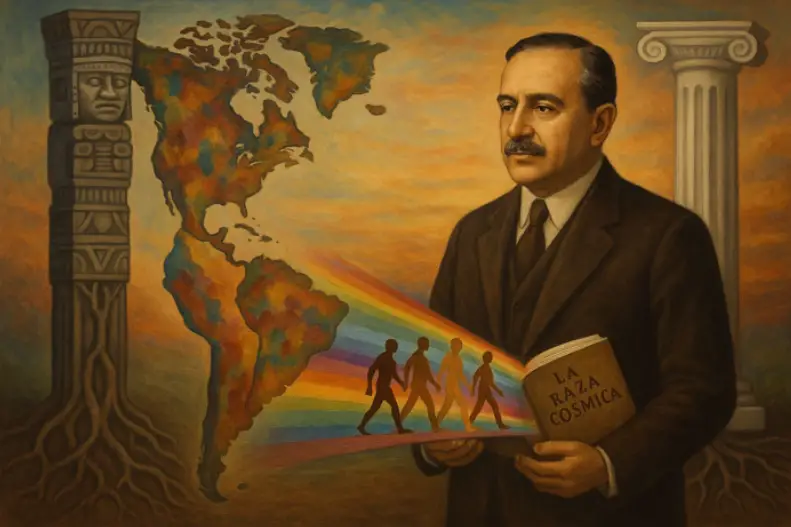 When people hear “La Raza” the first thing that comes to mind for many is the Chicano movement of the 1960s or the national group called La Raza that recently changed its name to Unidos U.S. The idea of La Raza predates them both. In 1925, Mexican philosopher José Vasconcelos published an essay titled La Raza Cósmica, or in English, “The Cosmic Race,” which presented a bold vision of a future humanity united through racial and cultural blending, with Latin America as its foundation. This concept of a “cosmic race” imagined a new race that would combine the strengths of all peoples—Indigenous, European, African, and Asian—into a spiritually and culturally advanced civilization. While Vasconcelos’ ideas were rooted in Mexico’s history and identity, some scholars suggest they may share similarities with occult philosophies, particularly Madam Helena Blavatsky’s Theosophy, a spiritual movement that emphasized human evolution and universal unity. In this episode of Mexico Unexplained we will examine Vasconcelos’ life and work, give a little background on Blavatsky and Theosophy, and explore whether occult ideas influenced La Raza Cósmica, offering a glimpse into a fascinating intersection of philosophy, culture, and mystery.
When people hear “La Raza” the first thing that comes to mind for many is the Chicano movement of the 1960s or the national group called La Raza that recently changed its name to Unidos U.S. The idea of La Raza predates them both. In 1925, Mexican philosopher José Vasconcelos published an essay titled La Raza Cósmica, or in English, “The Cosmic Race,” which presented a bold vision of a future humanity united through racial and cultural blending, with Latin America as its foundation. This concept of a “cosmic race” imagined a new race that would combine the strengths of all peoples—Indigenous, European, African, and Asian—into a spiritually and culturally advanced civilization. While Vasconcelos’ ideas were rooted in Mexico’s history and identity, some scholars suggest they may share similarities with occult philosophies, particularly Madam Helena Blavatsky’s Theosophy, a spiritual movement that emphasized human evolution and universal unity. In this episode of Mexico Unexplained we will examine Vasconcelos’ life and work, give a little background on Blavatsky and Theosophy, and explore whether occult ideas influenced La Raza Cósmica, offering a glimpse into a fascinating intersection of philosophy, culture, and mystery.
José Vasconcelos was born in 1882 in Oaxaca, Mexico, during a period of significant social and political change. Mexico was emerging from the Porfiriato, a 35-year dictatorship under Porfirio Díaz discussed in Mexico Unexplained episode number 380: https://youtu.be/t7aGC18O55g The long reign of Díaz ended with the Mexican Revolution in 1910. This upheaval created opportunities for intellectuals like Vasconcelos to shape the nation’s future. A lawyer by training, Vasconcelos was also a writer, educator, and politician who believed in the power of ideas to transform society. As Mexico’s Minister of Education from 1921 to 1924, Vasconcelos worked to expand access to education, particularly in rural areas, and promoted literacy for all Mexicans. He also supported the Mexican muralist movement, encouraging artists like Diego Rivera to create works that celebrated the nation’s Indigenous and mixed heritage. His efforts aimed to unify Mexico by embracing its diverse cultural roots, a theme that would define his most famous work, La Raza Cósmica.
Published in 1925, La Raza Cósmica outlined Vasconcelos’ vision of a new race that would emerge in Latin America through mestizaje, the blending of different racial and cultural groups. This “cosmic race” would transcend traditional divisions, combining the best qualities of all peoples into a unified humanity guided by aesthetic and spiritual values. Vasconcelos saw Latin America, and Mexico in particular, as the ideal setting for this transformation due to its long history of cultural and ethnic mixing. To understand whether this vision had occult influences, we must first examine another key figure influencing alternative and esoteric thought at the time: Madam Blavatsky.
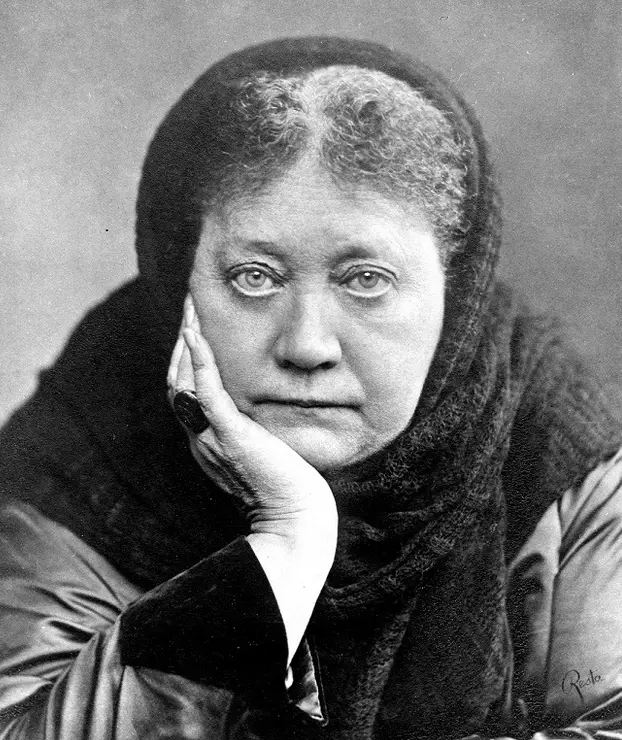 Helena Blavatsky, born in 1831 in Russia, was a pivotal figure in the development of modern occultism. A traveler and self-proclaimed mystic, Blavatsky claimed to have studied ancient wisdom in places like India and Tibet. Her broad quest for esoteric knowledge also took her to Mexico and Central America in the year 1851 where she visited various ancient Maya sites in the Yucatan and Honduras and spent time with Maya elders. In 1875, Blavatsky co-founded the Theosophical Society in New York City, an organization dedicated to exploring spiritual and occulted philosophical ideas. Theosophy sought to unite humanity, study the connections between religions, and uncover the hidden laws governing the universe. Blavatsky’s major works, Isis Unveiled and The Secret Doctrine, presented a complex cosmology describing humanity’s evolution through seven “Root Races.” These races represented stages of spiritual and physical development, progressing from ethereal beings to the current fifth Root Race, which Blavatsky called the “Aryan Race,” which was a term later misused by others with harmful consequences. She predicted that future races would achieve greater spiritual unity, ultimately forming a universal brotherhood. Theosophy drew from diverse sources, including Hinduism, Buddhism, and Western esoteric traditions, and emphasized a hidden “Secret Doctrine” that connected all religions.
Helena Blavatsky, born in 1831 in Russia, was a pivotal figure in the development of modern occultism. A traveler and self-proclaimed mystic, Blavatsky claimed to have studied ancient wisdom in places like India and Tibet. Her broad quest for esoteric knowledge also took her to Mexico and Central America in the year 1851 where she visited various ancient Maya sites in the Yucatan and Honduras and spent time with Maya elders. In 1875, Blavatsky co-founded the Theosophical Society in New York City, an organization dedicated to exploring spiritual and occulted philosophical ideas. Theosophy sought to unite humanity, study the connections between religions, and uncover the hidden laws governing the universe. Blavatsky’s major works, Isis Unveiled and The Secret Doctrine, presented a complex cosmology describing humanity’s evolution through seven “Root Races.” These races represented stages of spiritual and physical development, progressing from ethereal beings to the current fifth Root Race, which Blavatsky called the “Aryan Race,” which was a term later misused by others with harmful consequences. She predicted that future races would achieve greater spiritual unity, ultimately forming a universal brotherhood. Theosophy drew from diverse sources, including Hinduism, Buddhism, and Western esoteric traditions, and emphasized a hidden “Secret Doctrine” that connected all religions.
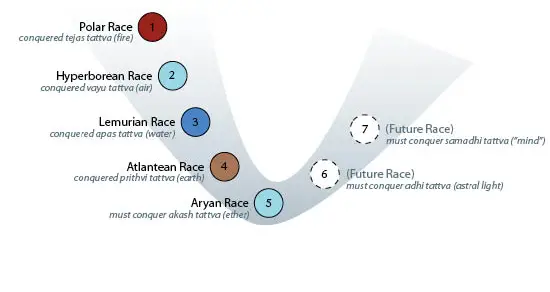 By the early 20th century, Theosophy had gained followers worldwide, including in Mexico, where lodges were established in cities like Mexico City and wealthy elites held theosophical salons in private homes. Prominent figures, such as President Francisco Madero, engaged with Theosophical ideas before his death in 1913. This global spread raises the question of whether Vasconcelos, an intellectual of the same era, might have embraced Theosophy and incorporated some of its concepts into La Raza Cósmica.
By the early 20th century, Theosophy had gained followers worldwide, including in Mexico, where lodges were established in cities like Mexico City and wealthy elites held theosophical salons in private homes. Prominent figures, such as President Francisco Madero, engaged with Theosophical ideas before his death in 1913. This global spread raises the question of whether Vasconcelos, an intellectual of the same era, might have embraced Theosophy and incorporated some of its concepts into La Raza Cósmica.
In La Raza Cósmica, Vasconcelos proposed that humanity’s history could be divided into four racial stages—Black, Indigenous, Asian, and White—each contributing unique qualities to the world. He argued that Latin America was uniquely positioned to create a fifth race, the cosmic race, through the mixing of these groups. This new race would not prioritize one culture over another but would synthesize their strengths into a civilization driven by beauty, creativity, and spiritual purpose rather than material gain or conflict. Vasconcelos viewed mestizaje as more than biological mixing; it was a cultural and spiritual process that would produce a humanity free from racial divisions. He believed Mexico’s history of blending Indigenous, Spanish, and other influences made it the ideal birthplace for this transformation. The cosmic race would embody universal values, creating a unified world where art and love guided human progress. This vision, with its emphasis on spiritual evolution and unity, bears similarities to occult philosophies like Theosophy, prompting speculation about possible connections.
While no direct evidence confirms that Vasconcelos studied Blavatsky’s writings or participated in Theosophical activities, several parallels between La Raza Cósmica and Theosophy suggest a strong influence. First, both Vasconcelos and Blavatsky framed human history as a progression through racial stages. Blavatsky’s Root Races described a cosmic evolution from primitive to advanced beings, while Vasconcelos’ five races culminated in the cosmic race, a unified and enlightened humanity. Although Blavatsky’s races were metaphysical and spanned millions of years, Vasconcelos’ were historical and cultural, stemming from his very Mexican experience. The structural similarities are notable, however. Second, both thinkers emphasized human unity with undercurrents of a one-world political philosophy. Theosophy’s primary goal was to form a “nucleus of the universal brotherhood of humanity,” a concept echoed in Vasconcelos’ vision of one race that transcends divisions. Both saw humanity moving toward a higher state: Blavatsky from a spiritual perspective, and Vasconcelos from an aesthetic and cultural perspective. Theosophy’s integration of Eastern 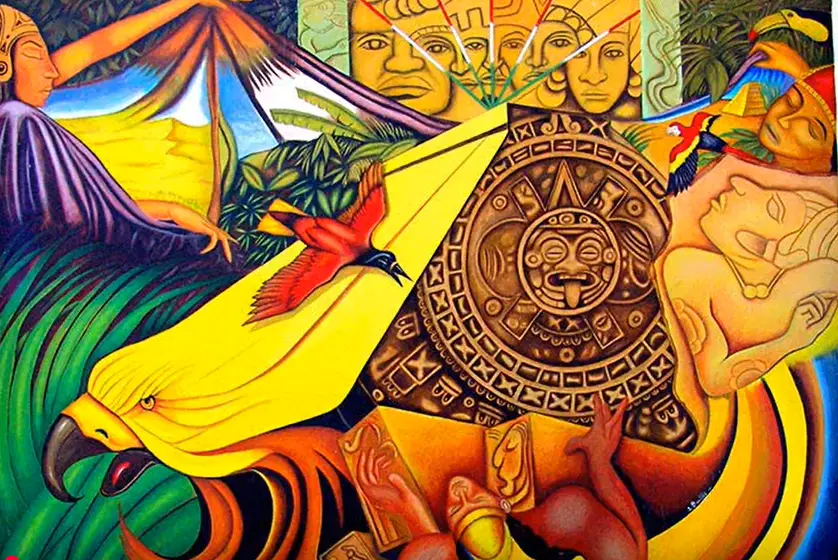 and Western spiritual traditions also resonates with Vasconcelos’ attempt to blend diverse cultural influences. Third, Theosophy’s strong presence in Mexico during Vasconcelos’ time supports a strong possibility of influence. The Theosophical Society had established lodges in Mexico by the 1890s, and its ideas were discussed among top intellectuals and political figures throughout the country. Vasconcelos, as a well-educated thinker, likely encountered these concepts, even if he did not formally engage with the movement by joining a lodge. Additionally, the early 20th century was a period of fascination with esoteric and occult ideas in Mexico – from spiritism to hermeticism to the Ordo Templi Orientis – as many sought alternatives to materialism and traditional religion. Theosophy’s blend of science, spirituality, and philosophy appealed to intellectuals worldwide, and Vasconcelos, who drew inspiration from philosophers like Nietzsche and Bergson, may have been influenced by similar ideas circulating in Mexico’s intellectual circles.
and Western spiritual traditions also resonates with Vasconcelos’ attempt to blend diverse cultural influences. Third, Theosophy’s strong presence in Mexico during Vasconcelos’ time supports a strong possibility of influence. The Theosophical Society had established lodges in Mexico by the 1890s, and its ideas were discussed among top intellectuals and political figures throughout the country. Vasconcelos, as a well-educated thinker, likely encountered these concepts, even if he did not formally engage with the movement by joining a lodge. Additionally, the early 20th century was a period of fascination with esoteric and occult ideas in Mexico – from spiritism to hermeticism to the Ordo Templi Orientis – as many sought alternatives to materialism and traditional religion. Theosophy’s blend of science, spirituality, and philosophy appealed to intellectuals worldwide, and Vasconcelos, who drew inspiration from philosophers like Nietzsche and Bergson, may have been influenced by similar ideas circulating in Mexico’s intellectual circles.
Beyond Theosophy, Vasconcelos’ ideas share themes with other esoteric and occultic traditions. His view of history as cyclical, with races rising and falling, resembles Hindu concepts of cosmic ages, which Madam Blavatsky also incorporated into Theosophy. Neoplatonism, an ancient philosophy that describes all existence emanating from a divine source, may also align with Vasconcelos’ vision of a unified humanity. Other Western esoteric movements, such as Rosicrucianism and Freemasonry, emphasized hidden knowledge and human improvement, themes that could have directly shaped Vasconcelos’ thought. However, Vasconcelos’ Catholic background and focus on Latin American identity suggest that his major influences were cultural and philosophical rather than occult. His emphasis on the mestizo nature of Mexican genetics and Mexico’s unique history indicates a grounding in regional concerns, even if his language of spiritual destiny sounds like something out of the occult or esoteric traditions.
The potential link between La Raza Cósmica and occult philosophies highlights the diverse sources that shaped Vasconcelos’ vision. His work was part of a broader effort to redefine Mexico’s identity after the Revolution, celebrating its mixed heritage as a source of strength. If occult ideas like Theosophy influenced him, they added a mystical dimension to his call for unity, making it resonate 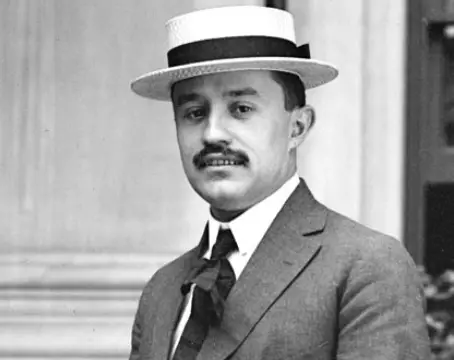 with global spiritual trends. However, La Raza Cósmica has faced criticism. Some argue that Vasconcelos’ focus on blending races undervalued the distinct contributions of Indigenous and African cultures, suggesting these cultures needed to merge into a new identity in order to be significant. Similarly, Madam Blavatsky’s Root Race theory has been criticized for implying racial hierarchies, particularly in its use of terms like “Aryan,” which were later misused by others. These critiques remind us that both thinkers, while visionary, operated within the complex and sometimes problematic racial ideas of their time.
with global spiritual trends. However, La Raza Cósmica has faced criticism. Some argue that Vasconcelos’ focus on blending races undervalued the distinct contributions of Indigenous and African cultures, suggesting these cultures needed to merge into a new identity in order to be significant. Similarly, Madam Blavatsky’s Root Race theory has been criticized for implying racial hierarchies, particularly in its use of terms like “Aryan,” which were later misused by others. These critiques remind us that both thinkers, while visionary, operated within the complex and sometimes problematic racial ideas of their time.
The question of whether José Vasconcelos drew direct inspiration from Helena Blavatsky and Theosophy remains unanswered. The similarities between La Raza Cósmica and Theosophical ideas—racial stages, universal unity, and spiritual progress—suggest a possible connection, but no definitive evidence links Vasconcelos directly to Blavatsky’s work. His vision was likely shaped by a mix of influences, including Mexico’s deep cultural history, philosophical readings, and perhaps a touch of the esoteric ideas popular in his era. La Raza Cósmica remains a powerful idea, encouraging followers to see diversity as a path to unity rather than division. Whether rooted in philosophy, culture, or the occult, Vasconcelos’ vision reflects Mexico’s role as a crossroads of ideas and peoples. The possibility that occult philosophies like Theosophy played a role adds an intriguing layer of mystery, inviting us to explore the hidden currents that shape history’s most important and transformative ideas.
REFERENCES

2 thoughts on “La Raza Cosmica’s Possible Occult Origins”
Excellent article. I\’ve always been intrigued by Vasconcelos\’ \”Cosmic Race\” theory and quite frankly, given the political events taking place in the USA, I wonder if many in the current administration with a \”white superiority\” complex may actually fear that Vasconcelos & Blavatsky\’s vision is coming true. By the way, I love your articles and the fact that you are among the few author\’s who actually cite their sources and reference materials in their online writing. Keep up the brilliant work!
Thank you!